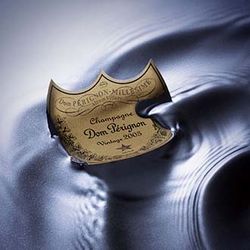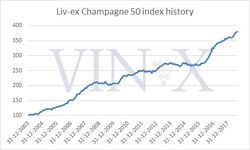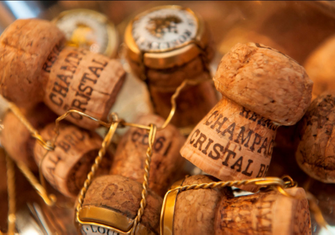
Liv-ex has just circulated an enlightening report to its trade members on the evolution of the growing secondary market for the very best wines of Champagne and their importance as an inclusion in a fine wine portfolio. The report’s opening statement reads: “Champagne is a unique product among its fine wine peers. Its distribution network is unparalleled, the environments that it exists in are diverse – restaurants, nightclubs, royal weddings – and brand recognition is stronger than in any other part of the market.” Liv-ex Champagne Market Report, October 2018
It is the ‘Steady Eddie’ of the fine wine world, enjoying year on year stable growth, remaining seemingly unaffected by the fine wine market peaks and troughs encountered by the great names of Bordeaux and Burgundy. This is largely in part due to the huge production volumes of non-vintage Champagne, netting owners and producers enormous revenues on which to develop extensive global distribution networks and to position their brands.
Champagne has always enjoyed strong demand in the licensed trade for consumption but recent years have seen rare vintage Champagnes enjoy growing focus in the secondary market for fine wine collectors looking for future gains. As a result the level of Champagne’s annual trade share on Liv-ex has increased from 1% to 8% in recent years.

Only Vintage Champagne from the very best years of a small number of key producers can be considered investment grade. Non-vintage Champagnes are a blend of the grapes from a number of vintages, but in the very best years a vintage Champagne will be produced with grapes from only that year by the vineyard. A vintage Champagne is not produced every year so they are immediately smaller in volume, in higher demand for quality driven consumers and become rarer as the vintage is consumed.
Vintage Champagnes account for 95% of the wines of the region traded on Liv-ex and the Champagne 50 index has, since its creation in 2004, shown a compound growth of 9.52% with growth in every year except for 2015 when it dipped by -0.7%. This was probably as a result of the market shift in focus overall back towards Bordeaux as that sector started to recover, but shows the stability Champagne generally enjoys. More recently, Champagne received a boost from the Brexit Referendum induced Sterling devaluation which has seen the Champagne 50 grow 35.3% since June 2016 to 31stAugust, 2018. Looking at this performance against other regional barometers only Burgundy has outstripped Champagne in this period.
The secondary market focus has grown from the circa 20 Champagne labels traded on Liv-ex in 2017 to about 140 at the end of August 2018, but how many of these are right for investment purposes must be carefully considered. Market participants have become increasingly engaged in Champagne, driving increasing exposure on Liv-ex, i.e. the total value of the bids and offers live on the market at any one time. In October 2018 the value of live bids is ten times higher than at the start of 2015.

The fundamentals of the secondary market in investment-grade Champagne are strengthening. The average spread between bids and offers on Liv-ex are consistently dropping and price setting is evolving more efficiently with a resultant growth in investor confidence.
So which wines should we be looking at? The wines which comprise the Champagne 50 index are certainly on our ‘watch list’:
LIV-EX CHAMPAGNE 50 WINES:
Bollinger, Grande Annee: 2002, 2004, 2005, 2007
Krug Vintage Brut: 1996, 1998, 2000, 2003, 2004
Louis Roederer Cristal: 2000, 2002, 2004, 2005, 2006, 2007, 2009
Louis Roederer Cristal Rose: 2006, 2007, 2009
Moet & Chandon Dom Perignon: 2002, 2003, 2004, 2005, 2006, 2009
Moet & Chandon Dom Perignon Rose: 2002, 2003, 2004, 2005
Philipponnat, Clos Goisset Brut: 2003, 2004, 2005, 2007, 2008
Pol Roger Winston Churchill: 2002, 2004, 2006
Ruinart Dom Ruinart: 2002, 2004, 2006
Salon Mesnil: 2002, 2004, 2006
Taittinger Comtes: 2002, 2004, 2005, 2006
Taittinger Comtes Rose: 2005, 2006
Examples of the top one year price performance these wines can achieve is the Louis Roederer Cristal Rose 2006 which saw a 34% price rise from £3,032 in August 2017 to £4,050 in August 2018. Salon Mesnil 2004 enjoyed at 27% price increase from £3,380 to £4,300 over the same period. These prices are reflective of the upper end of Champagne values and, relatively, wines of the region offer a lower cost entry into fine wine investment generally, compared to Bordeaux and Burgundy.
A key influencing factor on value is age and increasing rarity. There is a very distinct correlation between older aged, rarer Champagnes and price. Critics’ reviews can also influence value but newly published scores do not, in the main, create the spikes in price dynamics that we see with other wines. This is generally due to the much more significant supply of younger vintage Champagnes.
Not surprisingly there is generally a seasonal trend with Champagne with increased demand in the period running up to Christmas and late summer, but this can also be reflected in the secondary market where rarer wines are traded. Now would be a good time to add to your portfolio to position ahead of any potential annual price movement this year.
There is no doubting the strength of the market in Champagne for immediate consumption and the enormous volumes sold but the secondary market growth in the top wines of the region in recent years is validating Champagne’s place as an important component of a balanced fine wine portfolio. We will provide a more detailed review of Champagne in our October Wine Investment Market Report to be published soon.
Call us now for more information on 0203 384 2262.

